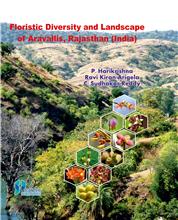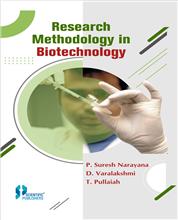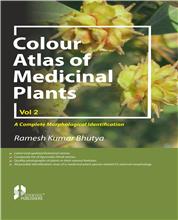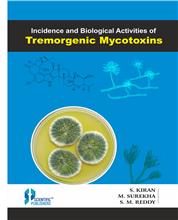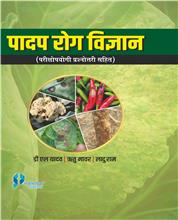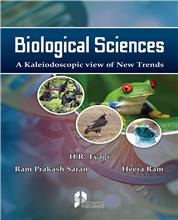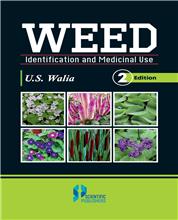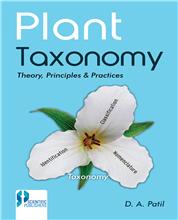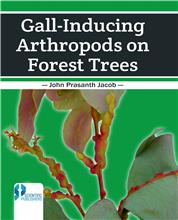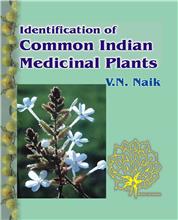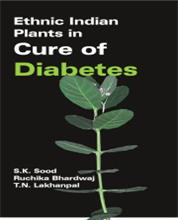1. THE ROOTS OF TAXONOMY
The Need For Classification
The Aims of Taxonomy
Definition and use of Terms
The Development of Classification Prior to Darwin:
1.Classification based on Habit
2. The Sexual System
3. Systems based on Form Relationships
Summary of Pre-Darwinian Classification
2. SYSTEMATICS AFTER DARWIN: ITS MODERN BASIS
The Effects of Evolutionary Theory on Systematics
Monographic and Floristic Developments
Definition and Use of Terms:
1. Primitive or Unspecialised, versus Advanced or Specialised
2. Homology and Analogy
3. Parallelism and Convergence
4. Horizontal and Vertical Classification
5. Phylogeny, Phylogenetic and Phyletic. Ontogeny
6. Monophyly and Polyphyly
7. Character Weighting
8. Grades and Clades
The data of Post-Darwinian Systematics
Palaeobotanical Evidence
Classification in Post-Drawinian Times
1. Phylogenetic systems
2. Natural systems
Post-darwinian Summary and conclusions
3 THE UNITS OF CLASSIFICATION
The Taxonomic Hierarchy
Principles used in Assessing Relationships, Delimitation of Taxa and Attribution of Rank
1. Criteria
2. Guides
3. Practical Considerations
Usage of the Categories
1. species
2. Genus
3. Gamily
4. THE CONCEPT OF CHARACTERS
Introduction
Definition of characters
1. Analytic and Synthetic Characters
2. Qualitative and quantitative Characters
3. “Good” and “Bad” Characters
Function and Taxonomic Characters
Characters and The Definition of Groups
Evolutionary Interpresetation of comparative Data
1. convergence
2. Necessary Correlates
3. Genetics, Cytology and the Likelihood of Change
Character Correlation and Discrimination: Numerical Taxonomy
1. Construction of Taxonomic Groups
2. Discrimination
3. Potential Value
5. TAXONOMIC EVIDENCE I
Morphology, Anatomy, Palynology, Embryology
Introduction
Morphology and Anatomy
1. Exomorphic and Endomorphic Characters
2. Neglected Morphological Characters
3. Anatomical Characters
Palynology and Embryology
1. Pollen Morphology and Taxonomy
2. Comparative Embryology
6. TAXONOMIC EVIDENCE II
Cytology
Introduction
Chromosome Number
Chromosome Morphology
1. Chromosome size
2. Chromosome Morphology and Relative Size
3. Heterochromatin
4. Chromosome Behaviour at Meiosis
The Taxonomic Value of Cytological Data
1. General
2. Family Level and Above
3. Generic Level
4. Specific Level
Polyploidy and Taxonomy
1. Frequency of Polyploidy
2. Types of Polyploidy
3. Autopolyploidy
4. Cryptic Polyploidy
5. Segmental Allopolyploidy
6. Allopolyploidy
7. Other situations
8. Polyploid Pillar Complexes
Cytogeography
7 TAXONOMIC EVIDENCE III
Phytochemistry
Introduction
Historical
Chemical Constituents as Comparative Data and Their Evolutionary Imterpretation
1. Distribution and Description of Directly Visible Chemical Substances
2. Chemical Test Characters: Plant Products
3. Proteins
Parasitism
Summary and Conclusions
8. FIELD, HERBARIUM AND LIBRARY
Introduction
Collecting Herbarium Material
1. How and What to Collect
2. Pressing and Drying
3. Mass Gatherings
Identification
Documentation
Taxonomic Revision
Typification and Nomenclature
1. The Type Method
1a. Typification of Linnaean Taxa
2. Nomenclature
9. PRESENTATION OF DATA
Introduction
Monographs and Revisions
Floristic Works
Keys and Synopses
Diagnoses and Descriptions
Citation
Mapping
The Geographical Morphological Method
Illustrations
Tabulation, Symbolic and Graphical Methods
10. MODIFICATION OF THE PHENOTYPE
Plasticity of the Phenotype
Genotype and Phenotype
Growth substances
The Investigation of Phenotypic Variability
Physical Factors and Modifications
1. Light
2. Temperature
3. Water
4. Wind
5. Soil
6. Biotic
Interaction of Factors
11. VARIATION WITHIN POPULATIONS
Introduction
The Population Concept
Causes of Variation in Populations
Genetic Variation
Recombination and The Reproductive System
Apomixis
Amphimixis
Evolutionary Significance of the Breeding System
Factors Controlling or Modifying The System
The Breeding System and Taxonomy
12. POPULATIONS AND THE ENVIRONMENT
Introduction
Turesson’s Experiments
The Californian Transect Experiments of Clausen, Keck & Hiesey
The School of Gregor
Other Patterns of Ecotypic Variation
Frequency of Ecotypic Differentiation
The Russian School
Ecotypes in Agriculture and Forestry
General Discussion
1. Nature and Origin of Ecotypes
2. Ecotypes and Ecads
3. Hybridisation and the Origin of Ecotypes
4. Parallelism between Genecotypes and Phenecotypes
5. Sampling Procedures
Recognition and Classification of Ecotypes
Ecotypes and Taxonomy
13. EVOLUTION AND THE DIFFERENTIATION OF SPECIES
Introduction
Abrupt and Gradual Speciation
Races, Species and Isolating Mechanisms
1. Geographical and Ecological Isolation
2. Seasonal and Temporal Isolation
3. Mechanical and Ethological Isolation
4. Internal Barriers
Crossability and Species Definitions
Polytopic Origin
1. The Relationships of Taxonomy and Biosystematics
2. The Units of Micro-evolutionary Dynamics
14. HYBRIDISATION AND TAXONOMY
Introduction
Stabilisation of Hybrids
1. Amphidiploidy
2. Introgression: sympatric and Allopatric
3. Hybrid Segregates
Methods of Analysis
Hybrid Complexes
Taxonomic Treatment of Hybrids
CONCLUSIONS
BIBLIOGRAPHY AND AUTHOR INDEX
SUPPLEMENTARY BIBLIOGRAPHY
INDEX OF SUBJECTS AND ORGANISMS


